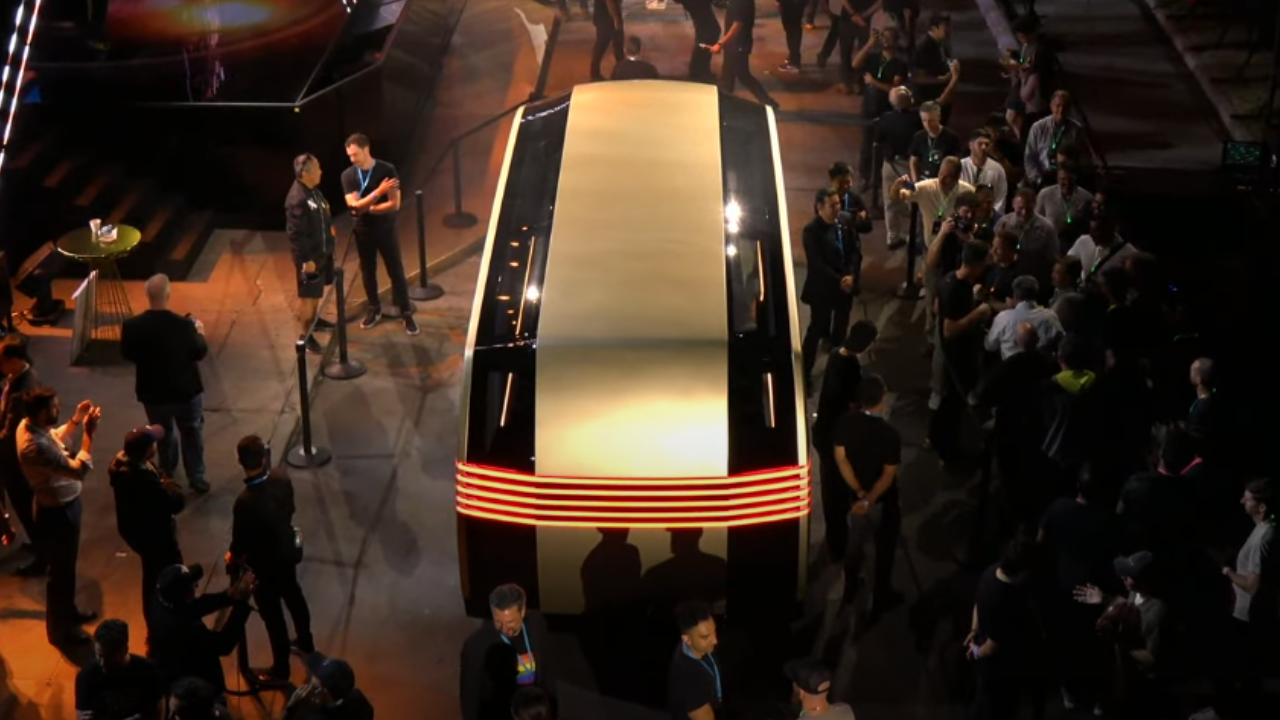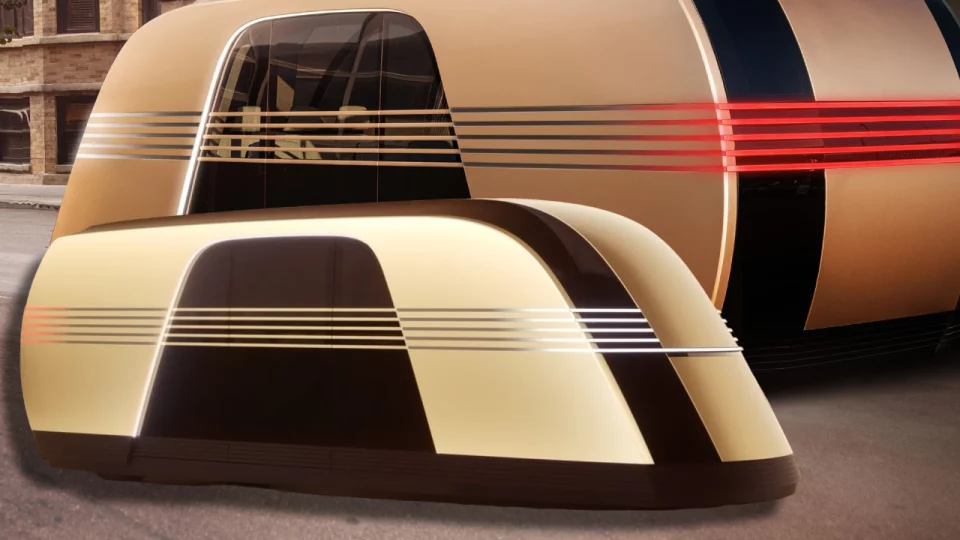In a surprise move that has sent shockwaves across the automotive industry, Tesla CEO Elon Musk unveiled the latest addition to the company’s revolutionary lineup: the Tesla Robovan. This unexpected announcement took place at Tesla’s much-anticipated “We, Robot” event, an occasion where attendees were expecting updates on robotics, AI advancements, or the highly anticipated Tesla Bot. However, no one anticipated the presentation of a futuristic passenger van.
The Robovan, as Musk refers to it, is unlike anything the world has ever seen, boasting a sleek design, cutting-edge technology, and the potential to reshape both passenger and commercial transport.
Table of Contents
A New Vision for Urban Mobility
Elon Musk is no stranger to grand ideas. His vision for transforming transportation, both on Earth and beyond, has been well-documented. Whether it’s through electric cars, autonomous driving, or even space exploration via SpaceX, Musk has consistently pushed the boundaries of what’s possible. The introduction of the Tesla Robovan is a continuation of this vision — a vehicle that redefines what a van can be, both in terms of design and functionality.
The Robovan’s futuristic appearance immediately distinguishes it from conventional passenger vans. With its sleek, train-like shape and Art Deco-inspired design, the vehicle looks more like a concept car from a sci-fi movie than a practical van. Notably, the van does not have visible wheels, suggesting a highly aerodynamic design optimized for efficiency. Musk stated that the Robovan would be capable of carrying up to 20 passengers or transporting large volumes of goods, making it suitable for a wide range of applications.
“The Robovan is what’s gonna solve for high density,” Musk said during the unveiling, emphasizing that the vehicle is designed to address the need for efficient, high-capacity transport in urban environments. “If you want to take a sports team somewhere, or you’re looking to really get the cost of travel down to, I don’t know, 5-10 cents a mile, then you can use the Robovan.” This statement highlights the Robovan’s potential to drastically reduce travel costs, especially for groups or businesses requiring frequent, large-scale transportation.
Integration with the Tesla Network
One of the most exciting aspects of the Tesla Robovan is its intended integration with the Tesla Network, Tesla’s autonomous ride-hailing service that has been in development for several years. The Tesla Network aims to create a fleet of self-driving vehicles available for ride-hailing purposes, effectively competing with companies like Uber and Lyft, but with one significant difference: it will be fully autonomous.
The Robovan is designed to be a key part of this network, offering both passenger transport and goods delivery capabilities. Whether used for ferrying passengers through busy urban centers or transporting cargo across distances, the Robovan’s versatility is expected to make it a central figure in the future of autonomous transportation. Tesla customers who own personal vehicles will also be able to lend their vehicles to the Tesla Network when not in use, earning income through this shared economy model. This adds a new dimension to car ownership, as owners could essentially turn their Tesla vehicles — including the Robovan — into income-generating assets.
A Long Time Coming
Although the Robovan’s reveal came as a surprise, hints of Tesla’s foray into the van market have been dropped before. Tesla’s “Master Plan Part Deux,” released in 2016, mentioned the company’s intent to develop “high passenger-density urban transport,” hinting at a future where autonomous buses or vans would play a significant role in urban mobility. At the time, the idea of a Tesla van seemed out of place, especially given Musk’s open disdain for public transportation, which he has criticized as being inefficient and uncomfortable.
However, in more recent communications, such as the unveiling of “Master Plan Part 3,” Tesla expanded on its ambitions for urban transport by explicitly listing “buses” and “commercial/passenger vans” as projects to be developed. The unveiling of the Robovan is a clear indication that Tesla has been working on this concept for some time, and the timing of its reveal suggests that the company is ready to compete in a rapidly evolving market for electric and autonomous vans.
Musk also teased a van-shaped vehicle earlier this year during Tesla’s annual shareholder meeting, where a mysterious, cloaked van appeared in a presentation slide. This moment was widely speculated to be an early hint of the Robovan, but no details were provided at the time.

The Electric Van Market: A Competitive Landscape
Tesla is entering the electric van market at a time when competition is heating up. Several automakers, both legacy brands and startups, are already vying for dominance in this space, offering electric alternatives to traditional internal combustion engine vans. Notable competitors include Volkswagen with its highly anticipated ID Buzz, a modern electric iteration of the iconic VW Microbus, and Mercedes-Benz with its electric eSprinter, a workhorse designed for commercial use.
In addition to these consumer-oriented offerings, several electric vans are being developed for commercial applications, where demand for electric delivery vehicles is growing rapidly. Companies like Amazon, FedEx, and UPS have all committed to electrifying their delivery fleets in the coming years. The Ram ProMaster EV, Ford E-Transit, and BrightDrop Zevo are some of the leading electric vans in this space, each designed to meet the needs of commercial operators seeking to reduce emissions and operating costs.
While these vehicles are focused primarily on commercial applications, the Tesla Robovan’s versatility gives it a unique edge. It can cater to both consumer and business needs, offering a single solution for passenger transport, goods delivery, and more. This ability to bridge multiple markets could make the Robovan a formidable contender, especially as the demand for electric and autonomous vehicles continues to grow.
Tesla’s Focus on Efficiency and Cost-Effectiveness
One of the primary selling points of the Tesla Robovan, according to Musk, is its potential to dramatically reduce transportation costs. By optimizing for efficiency and incorporating Tesla’s advanced battery technology, the Robovan could offer extremely low operating costs, particularly when used for group transportation or high-volume cargo delivery.
Musk’s mention of travel costs as low as 5-10 cents per mile is a bold claim, but it aligns with Tesla’s overarching goal of making electric and autonomous transportation affordable for the masses. If the Robovan can deliver on this promise, it could revolutionize both personal and commercial travel, offering a viable alternative to traditional fuel-powered vans, buses, and delivery vehicles.
The vehicle’s high passenger capacity further enhances its cost-effectiveness, making it ideal for businesses, schools, sports teams, and other organizations that frequently need to transport large groups of people. For delivery services, the Robovan’s spacious interior and adaptability make it an attractive option for logistics companies looking to electrify their fleets while maintaining operational efficiency.
